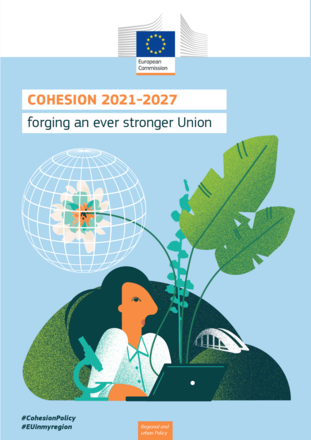
© Pe3k/Shutterstovck
In early May, the Commission published a working document on the potential impact of cohesion funds in member states during the current financial seven-year period. What are the economic prospects for the countries of South-East Europe?
1.3 million more jobs and EU GDP growth of 0.5% by 2029 – these are the Commission's estimates of the substantial impact that cohesion policy will have on the development of Europe's regions. Over the seven-year period 2021-27, 379 programmes will make use of the 378 billion Euros earmarked for cohesion policy, thus contributing to the creation of a more competitive, social, and inclusive Union. The total value of the investments amounts to 545 billion Euros if the contributions of the member states are also considered. Among the various categories of beneficiaries, almost 850,000 businesses will receive support, 723,000 homes will see their energy performance improve, and access to clean water will be granted to 16.4 million people.
After the demonstrated ability to adapt to the pandemic challenge of the last three years, cohesion policy returns to its priority objective of contrasting socio-economic disparities between the various regions of the EU, envisaging a significant economic recovery to the benefit of citizens. The beating heart of the cohesion agenda is the implementation of the green and digital transition, with a view to achieving the climate neutrality objective by 2050. Furthermore, important considerations follow on the contrast of the current negative demographic trends and the related consequences in terms of employability, training, and access to public services.
A significant financial boost is reserved for the least developed regions and member states of the EU, which will allow to strengthen their resilience and capacity to cope with external shocks, given the recent experience with the pandemic and the war in Ukraine. The resource intensity channelled to regions with a per capita GDP of less than 75% of the EU average is around €207 per inhabitant on average on an annual basis, while for the more developed regions this figure is equal to 21 Euros.
The prospects for the countries of South-Eastern Europe
Investments in Member States are concentrated on key policy areas, according to their territorial needs. According to Commission estimates, the North Aegean region of Greece leads the league table for the greatest potential impact from cohesion funds, coming close to a +6% increase in GDP. Among the member states, Croatia leads with a +4% increase in GDP, followed by Bulgaria and Romania with +3%.
Focusing on individual countries, Croatia is among the main beneficiaries of substantial aid from the cohesion policy, amounting to 298 Euros per inhabitant on an annual basis. The connectivity agenda is one of the main investment pillars of these funds, with almost 1 billion Euros allocated to sustainable infrastructure development, including the upgrade of 84km of railway lines which will result in an increase of over 200,000 users per year.
Bulgaria stands out among the EU countries most vulnerable to climate impacts, with an energy-intensive economy and an infrastructure of lower quality than the European average. Among the various investments, particular attention was paid to the water network and the restoration of ecosystems and biodiversity. More than 1.7 million people are expected to benefit from improved access to public water supplies. In addition, 167 km of roads will be built or improved and nearly 4,000 residential buildings will benefit from energy efficiency support.
Instead, the Romanian regions are an example of gradual convergence towards the EU GDP average, following the huge investments promoted by the cohesion funds in the 2014-2020 period. While regional disparities persist, these regions are catching up, going from 52% of the EU average GDP per capita in 2010 to 72% in 2020. The country has seen an increase of 7 billion Euros in the funds allocated from the EU budget compared to the previous financial period and a considerable share was devoted to the improvement of road and sustainable infrastructure. In particular, 424 km of railways will be (re)built as part of the TEN-T trans-European transport network, thus facilitating the country's integration into the single market.
Although it is an island, Cyprus is considered by the Cohesion Fund as a less developed region which has failed to ensure convergence with the rest of the EU over the last decade. The persistent socio-economic disparities are visible in terms of unemployment, educational attainment, risk of poverty, and social exclusion. 222 million Euros from the European Social Fund+ are earmarked for measures to raise the general level of skills and support active employment policies.
Finally, as regards Greece, regional disparities have increased over the last decade, with all regions located below the threshold for GDP per capita of less than 90% of the EU average. With the exception of only 2 regions (Attiki and Notio Aigaio), all the others continue to be considered underdeveloped. The cohesion funds allocated to Greece are intended to address existing structural challenges, such as skills development to facilitate access to the labour market, especially for young people. Overall, there are 6.5 billion Euros of funding intended to promote employment and social inclusion of vulnerable groups.
Il report
This content is published in the context of the "Work4Future" project co-financed by the European Union (EU). The EU is in no way responsible for the information or views expressed within the framework of the project. The responsibility for the contents lies solely with OBC Transeuropa. Go to the "Work4Future"







